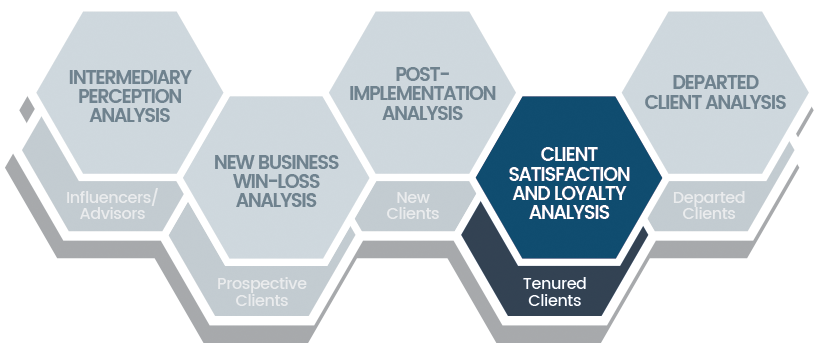Client Satisfaction and Loyalty Analysis
Listening To The Voice Of The Client First-Hand
Listening and responding to the needs of clients directly impacts their satisfaction, loyalty, and ultimately, retention levels. But gathering candid and unbiased feedback from financial services executives is easier said than done. Our Client Satisfaction research program uses comprehensive market surveys to provide unfiltered client opinions about your firm’s products and services, and client service levels.
Trust needs to be nurtured. It requires knowing a client well enough to be able to anticipate their needs. It depends on open and honest communication, which over the course of a client relationship may be taken for granted. Chatham’s research keeps the voice of the client front and center, and tracks changes year over year. Hearing first-hand feedback can help improve the health of client-firm relationships and turn clients into advocates.
Chatham’s proprietary benchmarks evaluate how a firm ranks versus the competition on a wide range of attributes. Our proprietary loyalty algorithm, refined over years of analysis, will identify clients who are at different stages of being “at risk” of leaving a firm, which facilitates the development of tailored strategies to get valuable relationships back on track.
Our process also uses proprietary statistical analysis to determine drivers of client satisfaction, in order to identify which improvements will have the greatest impact on improving satisfaction and loyalty.
Chatham’s Client Satisfaction/Loyalty Analysis enables our clients to:
- Learn how well clients value different products, services, and support
- Identify which attributes are most highly correlated to satisfaction and loyalty
- Benchmark client satisfaction levels against competitors on a wide range of attributes
- Identify specific “at risk” clients and proactively address their issues
- Understand underlying issues that cause clients to be designated as “at-risk”
- Determine which improvements will have the greatest impact


